LOOKING TO RECRUIT BUT DON’T KNOW WHERE TO START?
Article written by Lawrence Molyneux, Head of Division – Finance & Accountancy Recruitment
—
Career Moves Group are experts in recruitment, handling everything from drawing up specifications to candidate sourcing, offer management, and everything in between!
Here are some tips on attracting the best candidates for your business:
1. Time is Money! Set Out the Process Early
Recruitment takes time, so make a solid plan to save yourself time in the long run. Recruitment can often be a reactive process, especially when someone leaves the business. Depending on the level and complexity of the role, the recruitment process, along with the notice period, can take more than 6 months!
If you think, “We can’t wait more than a month,” you may be reducing your candidate pool and missing out on the best talent.
2. Agree on ‘What Good Looks Like’
Halfway through the process, you realize you’re searching for the wrong candidate!
Gather input from hiring managers, team members, and other relevant stakeholders to align on expectations and needs for the role. Anyone involved in screening, interviewing, and final decision-making must be on the same page regarding what defines a good candidate.
It’s also crucial to agree on the correct level and compensation early on by using market research, initial screenings, or consulting with specialist firms.
3. Structure the Interview Process
Changing the interview process mid-way can prolong it and affect candidate engagement.
Set the process early by agreeing on the structure and timeframes with everyone involved. Determine who will interview, when, and where, and check their availability. Block out interview slots in diaries to ensure a smooth flow.
Feedback is crucial for all parties, so make sure interviewers understand that timely feedback is a requirement. If tests are part of the process, plan for the necessary time, software, and assessment.
Different interview types include:
Screening Interview: An initial, often brief, interview to verify basic qualifications and fit.
Technical Interview: Focused on assessing specific technical skills or expertise.
Behavioural Interview: Uses the STAR method (Situation, Task, Action, Result) to evaluate past behaviour.
Panel Interview: Involves multiple interviewers from different areas of the organization for a broader perspective.
Final Interview: Typically, with senior management or stakeholders to assess overall fit.
4. Clarify the Role & Update the Job Description
Don’t fall into the trap of using an outdated job description!
While you can use an old JD as a template, it must be reviewed by key decision-makers. Ensure you understand the core competencies of the role, as businesses, processes, and team structures evolve.
The job description is often the first impression candidates have of your business. Incorrect wording, lack of detail, or poor branding can negatively impact candidate perceptions.
5. Advertise the Role Effectively
A job advert is like a company brochure—it needs to sell the business as well as cover key requirements.
Key elements of the advertisement:
Company introduction and why the role has opened up
Job type: Permanent, contract, or temporary
Duties, responsibilities, and required skills
Benefits—critical in today’s market
Salary—providing a range can attract the right candidates
Hybrid working options—important to manage expectations from the start
6. Source Candidates Using a Multichannel Approach
Use multiple sourcing channels. If one doesn’t work the first time, don’t write it off! Exceptional candidates can appear anywhere, so manage and check all portals, ads, and postings, whether direct or external.
Key channels include:
Job Boards and Platforms: Post the job on specific or general platforms like LinkedIn, Indeed, and Glassdoor.
Recruitment Agencies: Work with specialized agencies to access a broader pool of candidates.
Networking: Leverage your professional network or attend industry events to find candidates through referrals.
Company Website and Social Media: Promote the job on your company’s website and social media to attract both active and passive candidates.
7. Leverage Technology
Use available technology to streamline the recruitment process:
Applicant Tracking System (ATS): Manage applications, communication, and track candidates.
Assessment Tools: Evaluate technical skills, cognitive abilities, and cultural fit.
Data Analytics: Monitor recruitment metrics like time-to-hire, cost-per-hire, and source effectiveness.
8. Offer a Competitive Compensation Package
Offering the role to the candidate is great, but it can be challenging if not managed correctly. Understand the role’s level and salary early on, and keep candidates’ expectations in mind throughout the screening process.
Consider:
Salary and Bonuses: Research market rates to offer competitive compensation.
Benefits: Include comprehensive benefits like health insurance, retirement plans, and professional development opportunities.
Equity or Profit-Sharing: For senior roles, consider offering equity or profit-sharing to align the candidate’s interests with the company’s success.
9. Focus on Onboarding and Retention
Communication is crucial at every stage of the recruitment process, especially during onboarding and after the candidate has started. Provide a detailed onboarding plan, and offer ongoing training, mentorship, and opportunities for career advancement. This ensures that new hires feel valued and helps retain staff.
Article written by Lawrence Molyneux, Head of Division – Finance & Accountancy Recruitment
Lawrence is a seasoned Finance & Accounting recruitment professional serving as the Head of Division, boasting nearly a decade of dedicated experience in the field. His extensive expertise transcends various sectors, ranging from large global corporations to scaling businesses, naturally complementing Career Moves existing and growing client base. With a comprehensive understanding of all facets of accounting, Lawrence’s division seamlessly navigates through transactional finance, part, and fully qualified roles for both permanent and temporary hires. Notably, he distinguishes himself through his consultative and transparent approach, fostering strong relationships with both clients and candidates alike.









